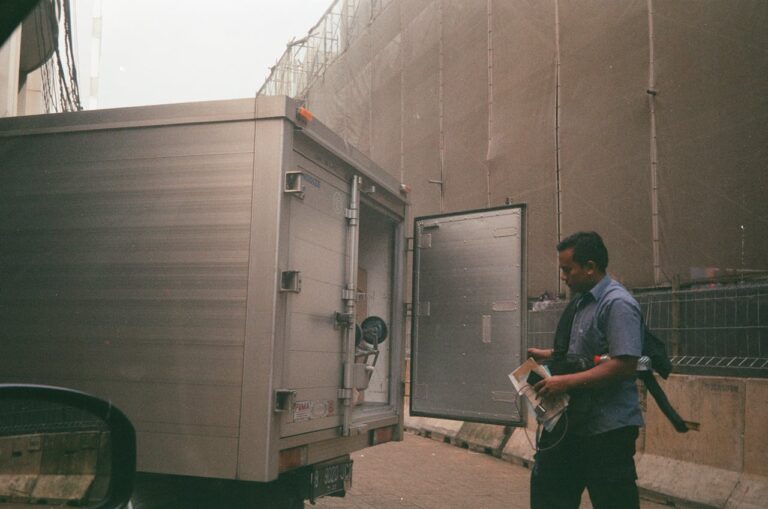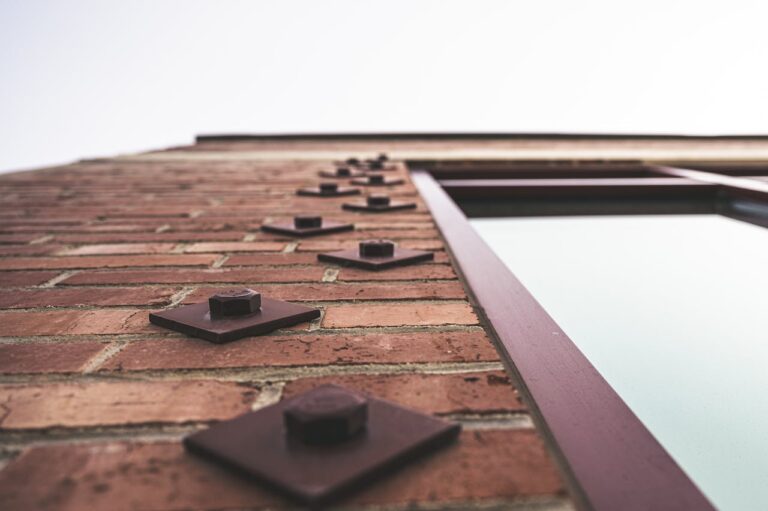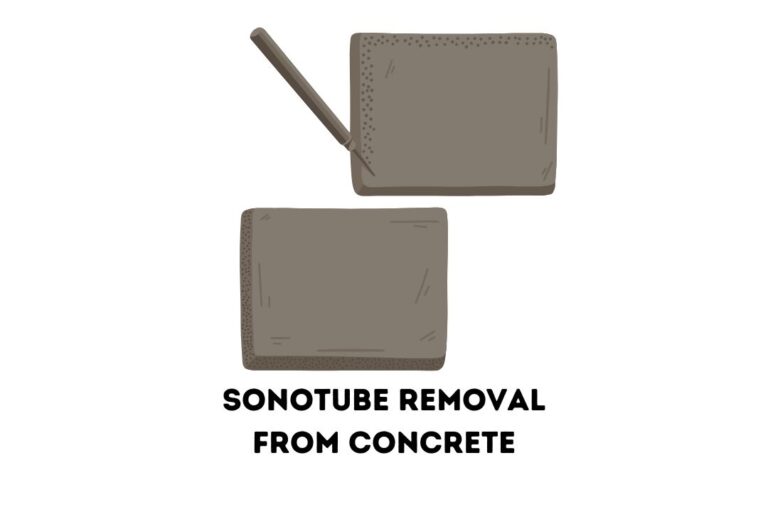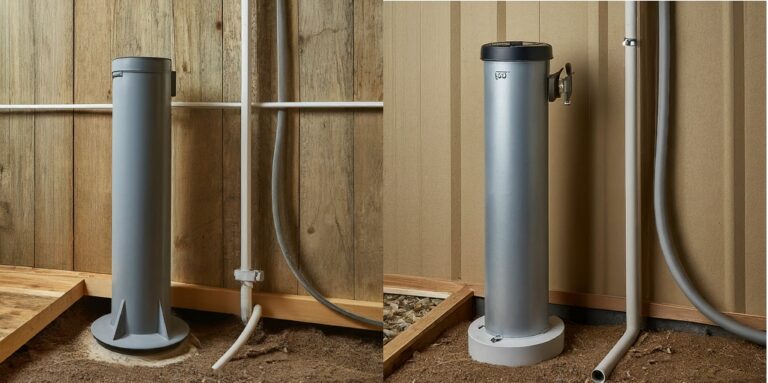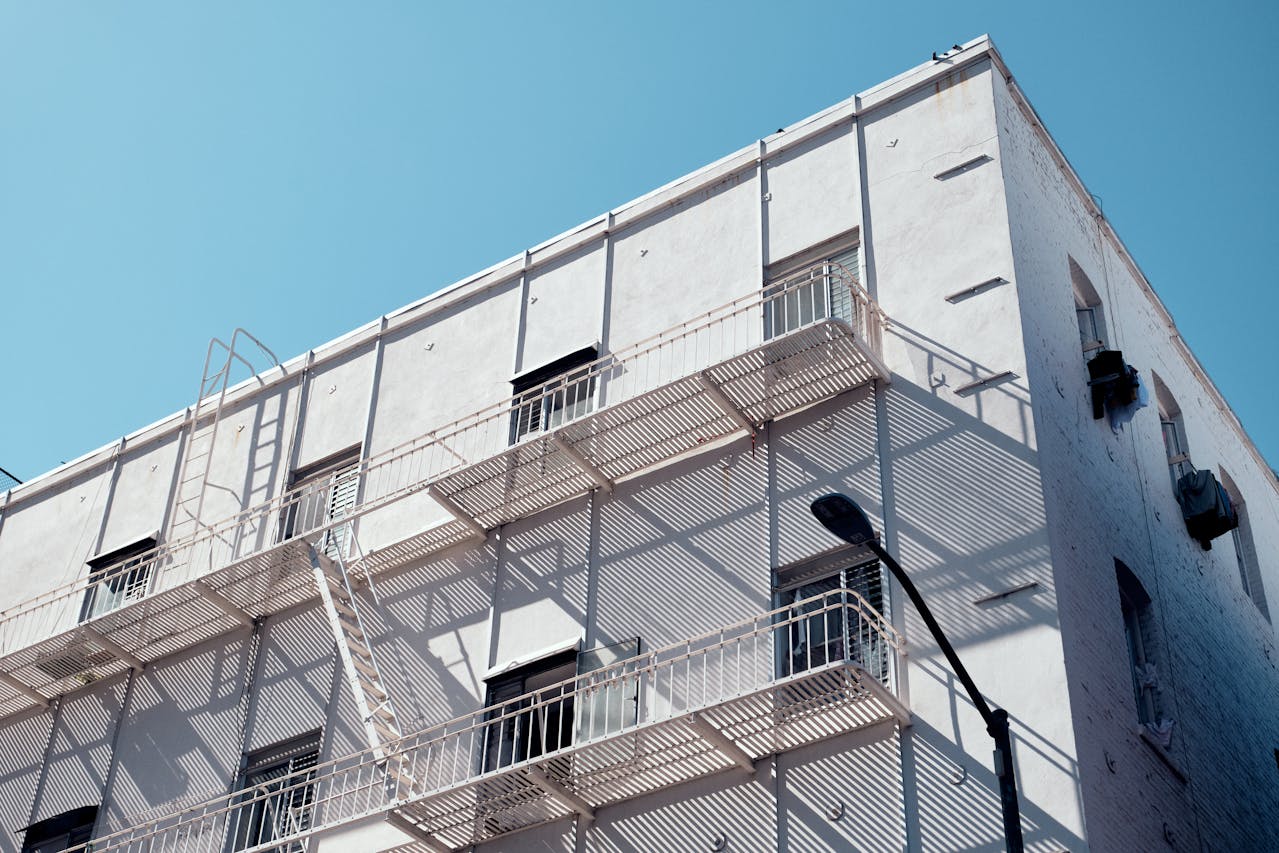
To secure scaffolding in a house, use guardrails, tie scaffolding to the structure, and ensure stability. Securing scaffolding is crucial to ensure safety in construction projects.
By following proper guidelines and using the right tools, you can effectively secure scaffolding in your house. This not only protects workers but also prevents accidents and damage to the property. Understanding the importance of securing scaffolding will help you create a safe and secure work environment.
We will discuss the essential steps and measures to securely set up scaffolding in your house. Whether you are a DIY enthusiast or a professional contractor, these tips will help you keep your construction site safe and secure.
Importance Of Securing Scaffolding
Properly securing scaffolding is crucial for the safety of workers, passersby, and the overall success of any construction project. It not only protects individuals on and around the site but also helps prevent potential accidents and injuries. Understanding the importance of securing scaffolding is paramount to ensuring a safe and efficient work environment.
Protecting Workers And Passersby
One of the primary reasons for securing scaffolding is to safeguard the workers and passersby in the vicinity. Harnessing and anchoring the scaffolding properly ensures that it remains stable and sturdy, minimizing the risk of collapse or unexpected movement. This also prevents falling objects or debris from endangering those working below or pedestrians passing by the construction site.
Preventing Accidents And Injuries
Securing scaffolding is vital for preventing accidents and injuries. When scaffolding is not properly secured, it can pose a significant risk to the workers and others in the vicinity. This can lead to falls, structural failures, or other accidents which can result in severe injuries or even fatalities. By securing the scaffolding in place, these risks are significantly reduced, creating a safer environment for everyone involved.
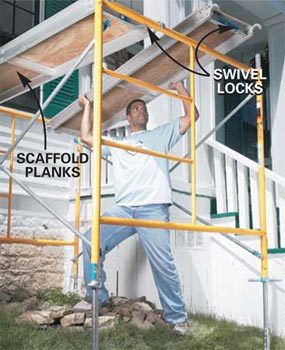 Credit: www.familyhandyman.com
Credit: www.familyhandyman.comUnderstanding Scaffolding Basics
Discover the fundamental steps to properly securing scaffolding in a residential setting for a safe and stable construction environment. Learn the crucial practices to ensure the stability and safety of scaffolding structures within a house.
Scaffolding ensures safety during construction projects. By understanding the basics, you can prevent accidents and work efficiently.
Types Of Scaffolding
Each type has specific uses and designs for different project requirements:
- Supported Scaffolding
- Suspended Scaffolding
- Rolling Scaffolding
- Cantilever Scaffolding
Components Of Scaffolding
Scaffolding consists of various essential components such as:
- Standards
- Ledgers
- Transoms
- Base Jacks
- Toeboards
Understanding scaffolding basics is crucial for a safe construction environment.
Choosing The Right Scaffolding Equipment
When setting up scaffolding in your house, selecting the appropriate equipment is paramount for safety and efficiency. Here’s a guide on choosing the right scaffolding equipment:
Identifying The Work Requirements
- Assess the specific tasks that need to be completed with the scaffolding.
- Determine the height and reach needed for the project.
- Ensure the scaffolding equipment matches the work requirements.
Considering The Weight Capacity
- Check the weight capacity of the scaffolding to support workers and materials.
- Avoid overloading the scaffolding to prevent accidents.
- Select scaffolding with a weight capacity that meets the project demands.
Evaluating The Durability
- Inspect the material and construction of the scaffolding for durability.
- Look for rust-resistant and sturdy scaffolding components.
- Choose equipment that can withstand the conditions of the work environment.
Steps To Secure Scaffolding
Scaffolding is a crucial element in the construction and maintenance of a house. Ensuring its secure installation is essential to maintain workers’ safety and the structure’s integrity. This guide will outline the necessary steps to secure scaffolding, covering key aspects from inspecting ground stability to installing guardrails and toe-boards.
Inspecting The Ground Stability
To begin securing scaffolding, it’s imperative to inspect the ground’s stability. Check for any uneven or soft areas. This can be done by walking around the scaffolding site and feeling for any give in the ground. In the case of soft areas, compacting the soil or adding stabilizing materials such as planks can help ensure a solid foundation.
Ensuring Proper Base Support
Proper base support is essential to prevent any instability. Ensure that the base plates are placed on firm, level ground. Use mud sills or sole boards to distribute the scaffolding’s weight evenly and prevent it from sinking into the ground or tipping over.
Securing The Braces And Crossbars
Braces and crossbars play a crucial role in enhancing the stability of the scaffold structure. Securely fasten the braces and crossbars using locking pins or clamps to prevent any movement or slippage. This step is vital in reinforcing the overall strength and stability of the scaffolding.
Installing Guardrails And Toe-boards
Guardrails and toe-boards are essential safety features to prevent falls from heights. Install guardrails at all open sides and ends of the scaffold platforms, and ensure they are securely fastened. Additionally, secure toe-boards along the edges of the platforms to prevent tools or materials from falling off, further ensuring a safe working environment.
Using Tie-ins And Anchors
Tie-ins and anchors provide additional support to the scaffolding structure. Securely attach tie-ins to the building or structure to prevent lateral movement. Additionally, use anchors to secure the scaffold to the building, ensuring stability and minimizing the risk of shifting or tipping.
Training And Safety Measures
Ensure the safety of scaffolding in your house with proper training and measures. Secure scaffolding by using base plates, guardrails, and diagonal braces for stability and fall protection. Regular inspections and adherence to safety protocols are essential for a secure scaffolding setup.
Introducing Training And Safety Measures For Secure Scaffolding At Home
Scaffolding is an essential component of any construction or renovation project. However, it is equally crucial to prioritize the safety of workers and the occupants of the house. Training and safety measures play a pivotal role in ensuring secure scaffolding. By implementing proper training to workers, incorporating fall protection measures, and conducting regular inspection and maintenance, you can minimize the risk of accidents and create a safe working environment. Let’s dive into these key aspects in more detail.
Providing Proper Training To Workers
An integral part of secure scaffolding is equipping the workers with the necessary skills and knowledge. Providing comprehensive training ensures that workers are aware of the potential hazards, understand best practices, and can handle the scaffolding equipment proficiently. Proper training should cover topics such as:
- Assembly and dismantle procedures
- Working at heights safety
- Safe material handling
- Load capacity awareness
- Emergency procedures
Regularly assess workers’ competency and provide refresher training to ensure they stay up-to-date with safety protocols and regulations. By investing in training, you empower your workers to perform their tasks safely and efficiently.
Implementing Fall Protection Measures
Fall-related accidents are a significant concern when working with scaffolding. Implementing fall protection measures is crucial to prevent these accidents and ensure worker safety. Here are a few measures to consider:
- Install guardrails on all open sides and ends of the scaffold platforms.
- Use safety nets or catch platforms to minimize the impact of falls.
- Require workers to use personal fall arrest systems, including harnesses, lanyards, and anchor points, when working at heights.
- Ensure access points to the scaffold are properly designed and protected.
- Regularly inspect fall protection equipment and replace any damaged or worn-out components.
By implementing these fall protection measures, you create a safer working environment where workers can focus on their tasks without worrying about potential falls.
Regular Inspection And Maintenance
Regular inspection and maintenance of scaffolding are vital for identifying and addressing any potential safety issues. Make it a priority to conduct thorough inspections before each use and periodically throughout the project. During inspections, pay attention to:
| Inspection Points | Action Steps |
|---|---|
| Structural integrity of the scaffolding | Look for any signs of damage or weakness, such as loose connections or bent components. Repair or replace as necessary. |
| Securely fastened components | Ensure all braces, couplers, and other connections are properly tightened. Loose components can compromise the stability of the scaffold. |
| Safe access and egress | Check that ladders, stairs, and platforms are secure and in good condition. Make sure there are no obstructions or slippery surfaces. |
Regular maintenance also involves keeping the scaffolding clean and free from debris that could cause slips or trips. By conducting regular inspection and maintenance, you can promptly address any safety concerns and maintain the stability and reliability of the scaffolding structure.
Legal And Regulatory Requirements
To secure scaffolding in a house, it is essential to adhere to legal and regulatory requirements. This involves ensuring that the scaffolding structure complies with industry standards and is regularly inspected for safety and stability. Additionally, it is crucial to obtain necessary permits and permissions before erecting the scaffolding to avoid any legal issues.
Regular compliance with legal and regulatory standards is imperative to ensure the safety and security of the scaffolding in a house.
Understanding Osha Guidelines
Complying With Local Building Codes
Maintaining a safe and secure work environment is essential when erecting scaffolding in a house. This involves adhering to legal and regulatory requirements. By understanding the guidelines set by the Occupational Safety and Health Administration (OSHA) and complying with local building codes, you can ensure that your scaffolding is structurally sound and safe.
Understanding Osha Guidelines
When it comes to scaffolding safety, OSHA guidelines are the gold standard. These guidelines provide detailed specifications and recommendations for properly constructing, using, and maintaining scaffolds. By familiarizing yourself with these guidelines, you can ensure that your scaffolding meets all necessary safety standards. Some key aspects of OSHA guidelines for securing scaffolding include:
- A stable and level foundation will be used to support the scaffold.
- Ensuring proper bracing and support at all times.
- Using guardrails and toeboards to prevent falls.
- Regularly inspecting scaffolding for any defects or damage.
- Providing adequate training and supervision for workers using the scaffolding.
Adhering to these guidelines not only promotes the safety of workers but also helps you avoid potential legal liabilities.
Complying With Local Building Codes
In addition to OSHA guidelines, it is essential to comply with local building codes when erecting scaffolding in a house. Local building codes may have specific requirements and regulations that must be followed to ensure the safety of workers and the general public. Some common considerations when complying with local building codes include:
- Obtaining the necessary permits and approvals before erecting scaffolding.
- Meeting minimum load capacity requirements.
- Ensuring proper clearance from power lines and other hazards.
- Adhering to height restrictions and setback requirements.
- Properly labeling and marking the scaffolding structure.
Each jurisdiction may have its unique set of building codes, so it is essential to research and understand the specific requirements applicable to your area. Failing to comply with local building codes can result in penalties and may jeopardize the safety of workers and those nearby. By understanding and adhering to OSHA guidelines and complying with local building codes, you can ensure your scaffolding is secure and meets all necessary legal and regulatory requirements. Prioritizing safety protects workers and promotes a positive and professional work environment.
Common Mistakes To Avoid
When securing scaffolding in a house, it’s crucial to be aware of common mistakes that can compromise safety. By understanding and avoiding these errors, you can ensure the security of the scaffold and the well-being of those working around it.
Ignoring Scaffolding Inspection
Neglecting regular scaffolding inspections is a grave mistake. An inspection helps identify any potential issues such as damaged parts or instability, allowing for timely maintenance. It ensures the scaffold is safe for use and prevents accidents due to overlooked faults.
Overloading Scaffolding
Overloading the scaffold beyond its capacity can lead to catastrophic consequences. Exceeding the weight limit can cause the scaffold to collapse, endangering workers and anyone nearby. It’s essential to abide by the manufacturer’s guidelines and not exceed the specified load limit.
Improper Assembly And Disassembly
Improper assembly and disassembly introduce significant risks. It’s crucial to follow the manufacturer’s instructions meticulously to ensure the scaffold is erected correctly and consistently secure throughout its use. Likewise, disassembly should be carried out with precision to prevent accidental collapses or structural failures.
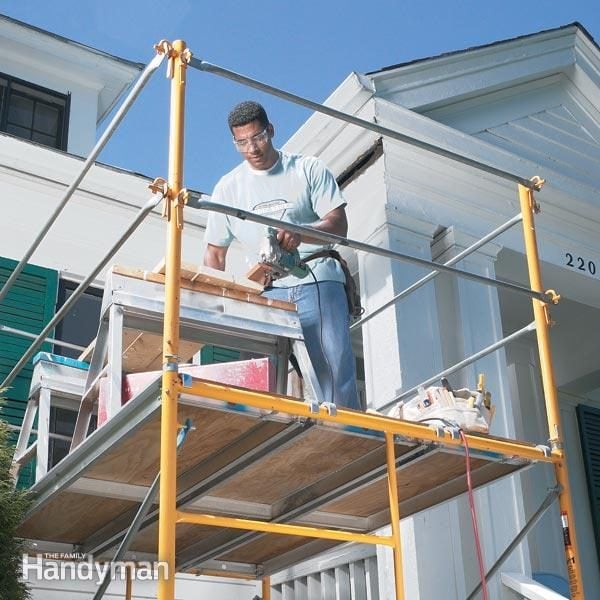
Credit: www.familyhandyman.com
Frequently Asked Questions Of How To Secure Scaffolding In A House
How Do You Secure Scaffolding In A House?
To secure scaffolding in a house, start by inspecting the ground for stability. Use proper base plates and adjustable leveling jacks for support. Secure the scaffolding to the building with tie-backs or braces at regular intervals. Ensure a maximum allowable gap between the scaffolding and the building.
Regularly check the secureness of the scaffolding throughout the project.
What Are The Safety Precautions For Securing Scaffolding?
Safety precautions for securing scaffolding include ensuring a level and solid foundation, using guardrails and toe boards, securing the scaffolding to the building, avoiding overloading the scaffolding, inspecting regularly for defects or damage, and providing proper training to workers who will be using the scaffolding.
Always prioritize safety when securing scaffolding.
Are There Any Regulations For Securing Scaffolding?
Yes, there are regulations for securing scaffolding. The Occupational Safety and Health Administration (OSHA) provides guidelines for scaffold safety, including requirements for proper securing and bracing of scaffolding. Compliance with these regulations is essential to ensure a safe working environment and avoid scaffolding-related accidents or injuries.
Conclusion
To sum up, securing scaffolding in a house is crucial for safety and structural integrity. By following the proper guidelines and using reliable equipment, you can ensure a secure and stable scaffolding setup. Regular inspections and maintenance are key to preventing accidents and maintaining a safe working environment for all involved in the construction process.

